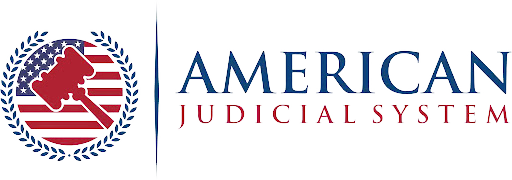In today’s society, where the significance of mental and emotional well-being is widely recognized, the role of wellness checks has gained paramount importance. Amidst this concern for individuals’ welfare, a subtle yet crucial demarcation emerges – the distinction between authentic care and potential harassment. This article serves as a comprehensive exploration of this intricate divide, specifically focusing on the pivotal question: “When Does A Wellness Check Become Harassment?” By delving into the intricacies of this topic, we aim to illuminate the circumstances under which a seemingly well-intentioned wellness check can inadvertently cross over into the realm of harassment, a subject deserving of profound consideration.
When Does A Wellness Check Become Harassment?
A wellness check turns into harassment when it becomes excessively intrusive, disregards personal privacy, and causes distress. It’s vital to maintain a balance between genuine concern and respecting boundaries to ensure the well-being of the individual in question.
Understanding Wellness Checks
In today’s focus on mental well-being, wellness checks strike a balance between genuine concern and potential harassment. Exploring “When Does A Wellness Check Become Harassment?” highlights the line between a well-intentioned gesture and an intrusion of personal boundaries. Wellness checks, conducted by friends, family, neighbors, or law enforcement, demonstrate our collective care for each other’s safety. The question of when these checks cross into harassment territory is pivotal in today’s context.
Amid crises, wellness checks provide a lifeline, conveying the message that support is present. Beyond routine, they offer empathy and assistance, reminding individuals they’re not alone. Balancing concerns and boundaries is vital. An intrusion into personal space, even with good intentions, can lead to discomfort. Understanding emotional and psychological space is key. Wellness checks succeed when they respect privacy and emotional well-being. Each individual’s experience is unique, requiring sensitivity. Combining care and understanding maintains the essence of wellness checks.
The Thin Line Explored
Recognizing Harassment In Wellness Checks:
Wellness checks can be a source of harassment when they blur the line between genuine concern and overzealous involvement. Excessive frequency can worsen emotional distress and disempower an individual. It’s crucial to respect personal boundaries, understand an individual’s well-being, and adjust check frequency accordingly. Recognizing harassment requires understanding the recipient’s emotional state, and honoring their ability to manage their circumstances.
Privacy Violations And Harassment:
Harassment emerges when wellness checks disregard privacy. Unauthorized entry into personal spaces or sharing sensitive information breaches the individual’s rights, causing emotional harm and distress.
Impact On Mental Health:
If wellness checks become excessive or intrusive, they can worsen an individual’s mental state. Instead of feeling supported, they may feel cornered, leading to resentment and deteriorating emotional well-being.
Communication Matters:
Open communication is the cornerstone of preventing wellness checks from evolving into harassment. When the person being checked upon articulates their unease concerning the frequency or manner of these interventions, it’s paramount to not only listen attentively but also to demonstrate a willingness to adapt. This active response not only acknowledges their feelings but also underscores the mutual respect and concern that should underpin every wellness check. By heeding their feedback and adjusting our approach accordingly, we ensure that the individual’s boundaries and emotions are valued, fostering an environment of trust and understanding.
Navigating Wellness Check Boundaries
Navigating the intricate balance of wellness check boundaries is essential to ensure that care doesn’t inadvertently cross over into harassment. Here’s a breakdown, utilizing bullet points for easy comprehension:
Respect The Individual’s Autonomy: Acknowledge that each person’s situation is unique, and their ability to manage their well-being should be honored.
Prioritize Open Dialogue: Encourage open conversations about the necessity and frequency of wellness checks. This promotes mutual understanding and prevents misunderstandings.
Obtain Consent: Before conducting a wellness check, especially in sensitive scenarios, seek explicit permission to enter personal spaces or gather information.
Establish Boundaries: Clearly define the scope and purpose of wellness checks, ensuring that they align with the person’s needs and comfort level.
Offer Alternatives: Explore alternative ways to support, such as virtual check-ins, providing resources, or suggesting professional assistance.
Adapt To Feedback: If the person being checked upon expresses discomfort, be receptive and adjust the approach accordingly. Flexibility is key to avoiding potential harm.
Avoid Frequent Intrusions: Regular and excessive wellness checks can lead to feelings of distress. Strive for a balance that provides reassurance without overwhelming.
Educate Well-Wishers: Ensure that everyone involved in wellness checks understands the importance of respecting personal boundaries and emotional well-being.
Promote Empathy: Approach every check with genuine empathy, understanding the emotions the individual might be experiencing.
Seek Professional Help: If concerns persist or escalate, consider involving mental health professionals who can offer specialized support.
By adhering to these guidelines and employing sensitivity, wellness checks can remain the reassuring gestures they’re intended to be, fostering support and safety while avoiding the pitfalls of harassment.
Balancing Concerns And Boundaries
Striking the delicate equilibrium between genuine concern and respecting personal boundaries is paramount to ensure that wellness checks remain supportive without crossing into harassment. Here’s an in-depth exploration, combining a paragraph with concise bullet points:
Finding the harmony between expressing care and honoring boundaries is a fundamental aspect of conducting wellness checks. It involves understanding the individual’s emotional landscape and navigating their needs with sensitivity. To strike this balance effectively, consider the following:
- Empathetic engagement is crucial in addressing wellness checks, as it acknowledges potential vulnerability or distress in the individual.
- The text advises initiating communication in a supportive and non-intrusive manner, allowing individuals to express their feelings freely.
- Respect personal autonomy by allowing individuals to determine their level of engagement they are comfortable with.
- Listen attentively and attentively to the individual’s concerns, anxieties, or preferences during the conversation.
- Be aware of potential triggers that may cause discomfort or unease for the individual.
- Before gathering or conducting any checks, it is crucial to obtain explicit permission from the individual.
- Frequency Consideration: Evaluate the necessity of the wellness check based on the individual’s well-being and the circumstances.
- Offering Support: Provide assistance that aligns with their needs, whether it’s a listening ear, practical help, or suggesting professional resources.
- Respecting Feedback: If they express discomfort or preference for fewer check-ins, honor their wishes and adjust accordingly.
- Avoiding Assumption: Never assume you know what’s best for them; their perspective is invaluable.
- Maintaining Connection: Even when the situation improves, continue showing care and maintaining open lines of communication.
Balancing concerns and boundaries necessitates a deep respect for the person’s emotions and a willingness to adapt based on their comfort level. By nurturing a relationship built on empathy, trust, and mutual understanding, wellness checks can truly serve as pillars of support without encroaching on personal space or transforming into unwelcome intrusions.
Final Word
Wellness checks are a crucial aspect of our collective responsibility to ensure the safety and well-being of others. However, they can sometimes become harassment when frequency, privacy, and emotional well-being are overlooked. To avoid this, a thoughtful approach that values individual autonomy, encourages open conversations, and adapts based on feedback is necessary.
A wellness check, when conducted with empathy and respect for limits, becomes a beacon of support, reaffirming the line between genuine concern and harassment. The power of a wellness check lies in its ability to offer solace during challenging times and exemplify compassion, understanding, and the shared journey towards better mental and emotional well-being. By embracing this delicate balance, we can ensure our efforts to care for others remain rooted in sincerity and goodwill, without ever crossing into the realm of harassment.
FAQ’s
Can Wellness Checks Be Considered Harassment?
No, wellness checks are meant to ensure safety and well-being. However, they can cross into harassment territory if they become excessive, intrusive, or disregard privacy.
What Should I Do If I Feel Harassed By Wellness Checks?
Communicate your feelings to the concerned parties and establish boundaries. If the situation persists, seek advice from legal authorities.
Are There Alternatives To Wellness Checks?
Yes, staying connected with the person through regular communication, offering help, and suggesting professional assistance are alternatives to constant wellness checks.
Can Law Enforcement Conduct Wellness Checks Without Permission?
Generally, law enforcement requires reasonable cause or consent to conduct a wellness check. Unauthorized or frequent checks can raise concerns of harassment.
How Can I Support Someone Without Invading Their Privacy?
Respect their personal space, listen actively, and offer assistance without assuming control. Always prioritize their feelings and boundaries.










